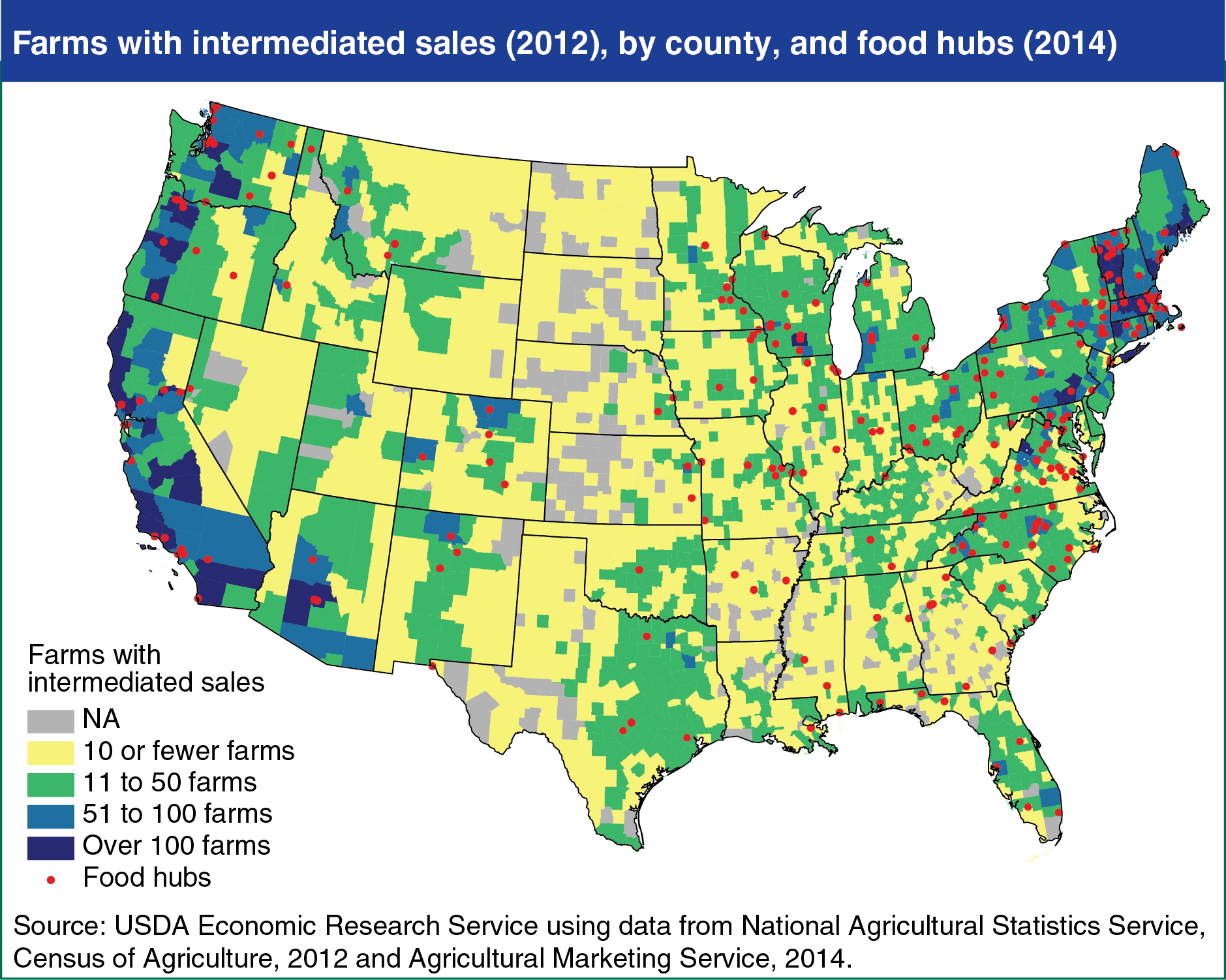Food hubs and the farms they serve are located near urban areas
- by Sarah A. Low and Stephen Vogel
- 1/29/2015

Farmers have two main channels through which to sell their food locally: directly to consumers (at farmers' markets, roadside stands, farm stores, etc.) and through intermediated marketing channels (defined to include sales to grocers, restaurants, schools, universities, hospitals, and regional distributors). In 2012, 163,675 farmers sold an estimated $6.1 billion in local foods overall, with an estimated $4.8 billion sold by 48,371 farmers through these intermediated marketing channels. The number of dedicated local food distributors, brokers, and aggregators serving these intermediated marketing channels, known as regional food hubs, increased by 288 percent between 2007 and 2014, to a total of 302. By engaging in market outreach activities and offering technical services to producers, food hubs provide markets for midsized farmers, and opportunities for small and beginning farmers to scale-up local food sales without increasing the time farm operators and their households spend on marketing activities. Most food hubs are located in metropolitan areas, and where farms with intermediated sales are most numerous. This map is found in the ERS report, Trends in U.S. Local and Regional Food Systems: Report to Congress, January 2015.

